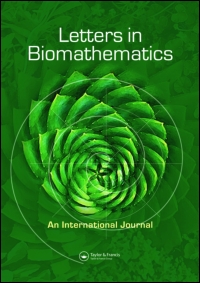Dynamics of two pathogens in a single tick population
DOI:
https://doi.org/10.30707/LiB6.1WhiteKeywords:
Ticks, vector-borne disease, pathogen, competition, invasion reproductive numbersAbstract
A mathematical model for a two-pathogen, one-tick, one-host system is presented and explored. The goal of this model is to determine how long an invading pathogen persists within a tick population in which a resident pathogen is already established. The numerical simulations of the model demonstrate the parameter ranges that allow for coexistence of the two pathogens. Sensitivity analysis highlights the importance of vector-borne, tick-to-host, transmission rates on the invasion reproductive number and persistence of the pathogens over time. The model is then applied to a case study based on a reclaimed swampland field site in southeastern Virginia using field and laboratory data. The results pinpoint the thresholds required for persistence of both pathogens in the local tick population. However, the invading pathogen is not predicted to persist beyond three years. Understanding the persistence and coexistence of tick-borne pathogens will allow public health officials increased insight into tick-borne disease dynamics.
